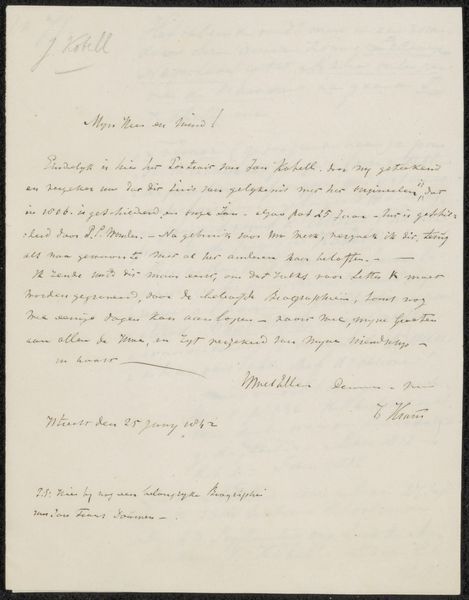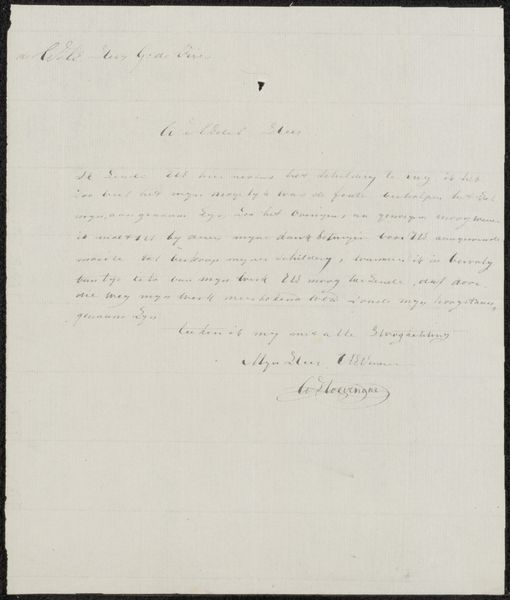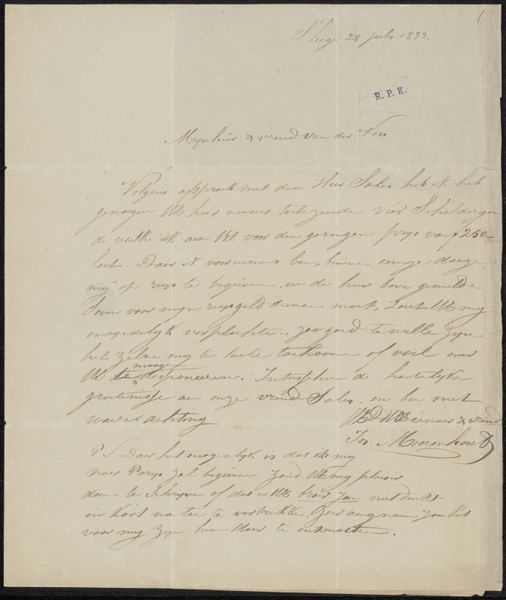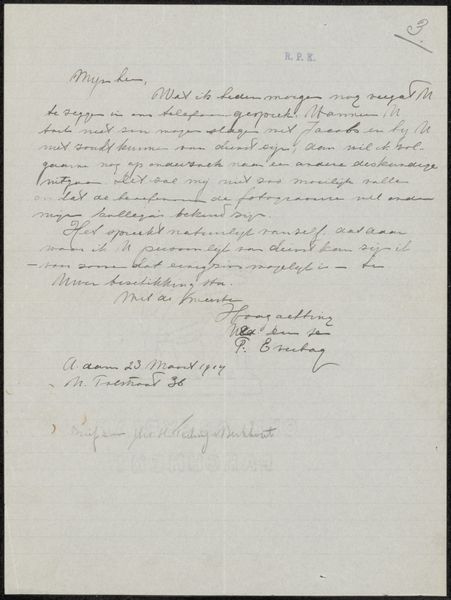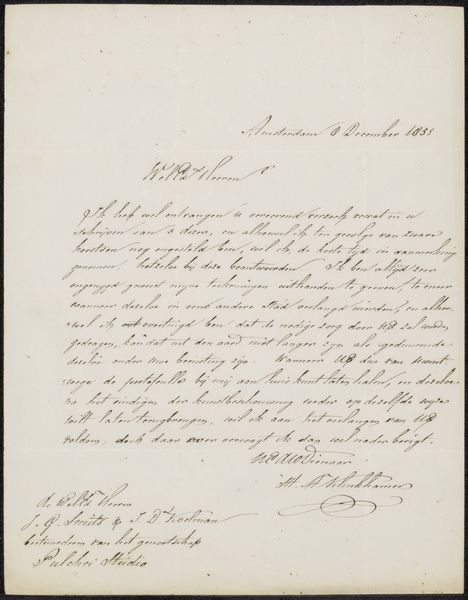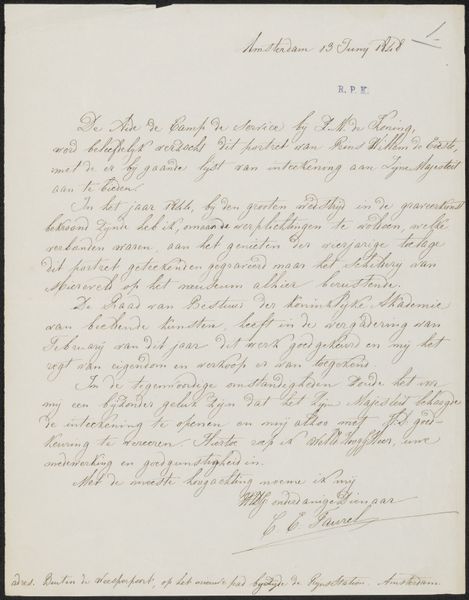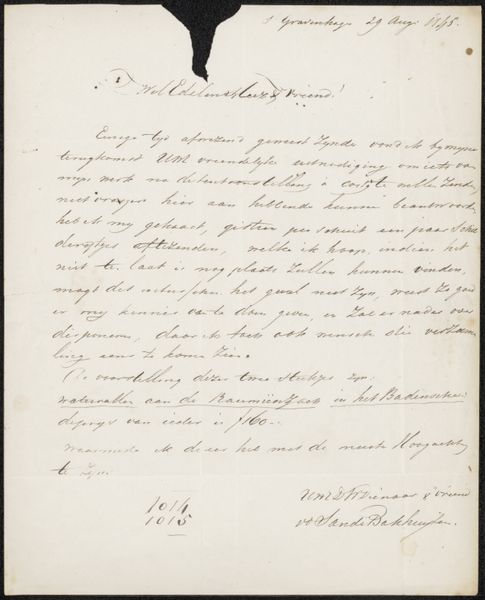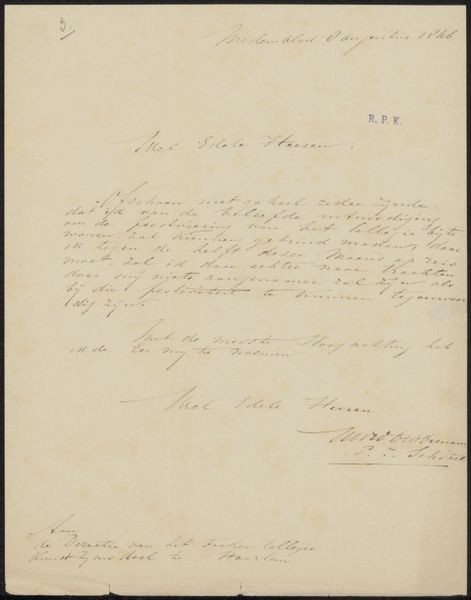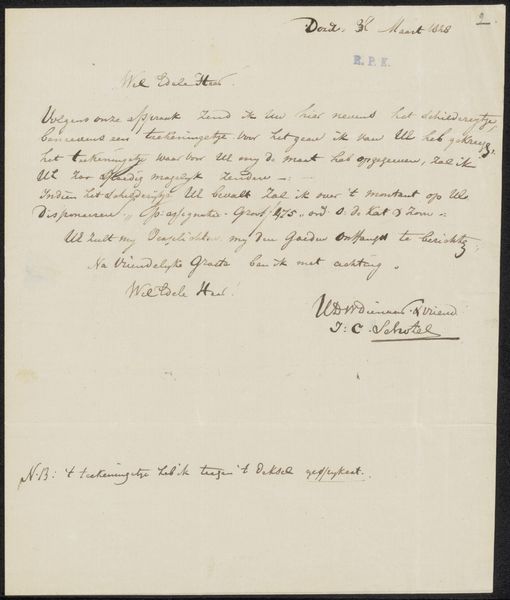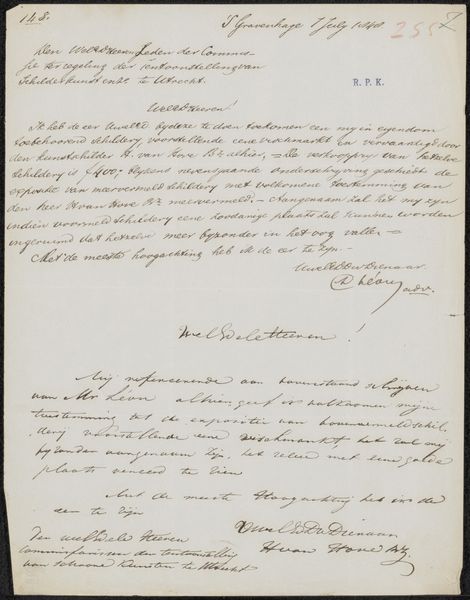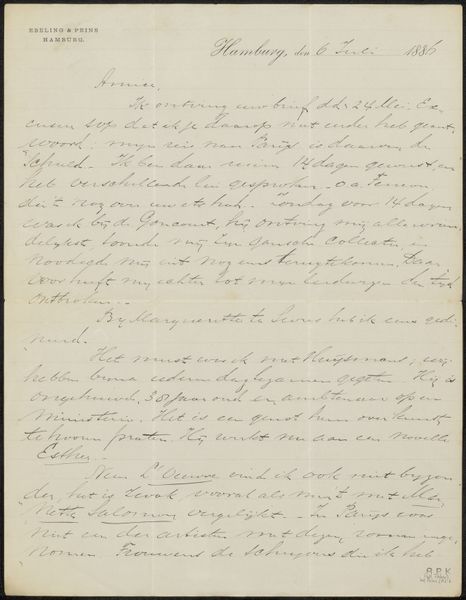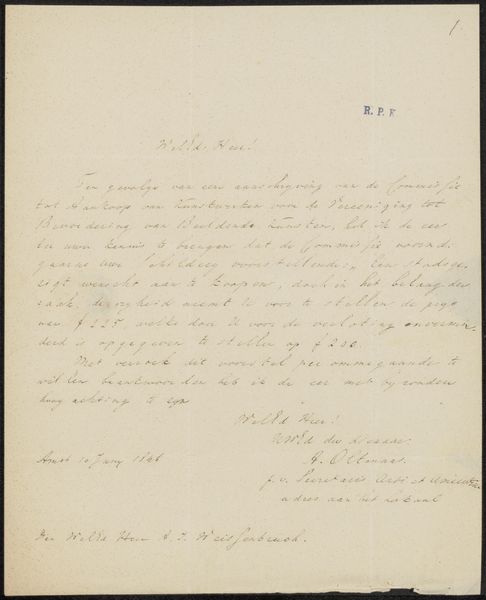
drawing, paper, ink, pen
#
drawing
#
ink paper printed
#
old engraving style
#
hand drawn type
#
paper
#
text
#
personal sketchbook
#
ink
#
ink drawing experimentation
#
romanticism
#
pen-ink sketch
#
ink colored
#
pen work
#
sketchbook drawing
#
pen
#
sketchbook art
Copyright: Rijks Museum: Open Domain
Curator: Welcome. Before us, we have "Brief aan Augustus Alexander Weimar," a letter created possibly between 1840 and 1844 by Barend Cornelis Koekkoek. It's rendered with pen and ink on paper, currently residing in the Rijksmuseum. What strikes you upon seeing it? Editor: The penmanship, above all! There's a rhythm to it, almost musical. The visual texture of the ink on the page is just wonderful, a delicate balance between light and shadow that brings life to what would otherwise be a simple document. Curator: Absolutely. Let’s consider its context, though. This wasn't just any letter. It offers a direct connection to the artistic production itself. Think about the labour involved: the preparation of the ink, the careful selection of the paper, the act of writing itself, possibly communicating deadlines to a patron? All materially embedded within. Editor: I agree that those factors are undeniable. Yet, apart from the labor implications, doesn’t the handwriting express something beyond the functional? Notice the swirls, the varying pressures that give the text its character. There's an artfulness even within the constraints of communication. It's expressive in ways type never could be. Curator: Certainly, we shouldn't discount Koekkoek’s intentional artistry. However, the constraints you mention were economic and material realities. His choice of ink, pen, and paper are a result of specific production capabilities of his era. Examining these reveals broader networks of trade, commerce, and the means available for an artist like Koekkoek to function. It shifts art historical consideration from singular genius to considering available infrastructure. Editor: I appreciate the way you've connected it to those societal factors, and certainly recognize that the history of those objects play a crucial role in the execution and condition of this piece, but to bring this back to pure visual language: it's undeniable how much visual expression occurs on that page, wouldn’t you say? Curator: The materiality informs the form, and the form suggests expression within very distinct historical means of production! Editor: A fitting harmony between your view and mine, then! Thanks for unpacking the material underpinnings alongside this visually remarkable example of personal art-making, Barend Cornelis Koekkoek-style.
Comments
No comments
Be the first to comment and join the conversation on the ultimate creative platform.
